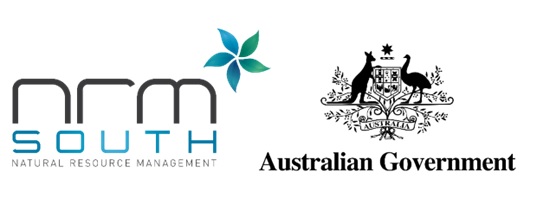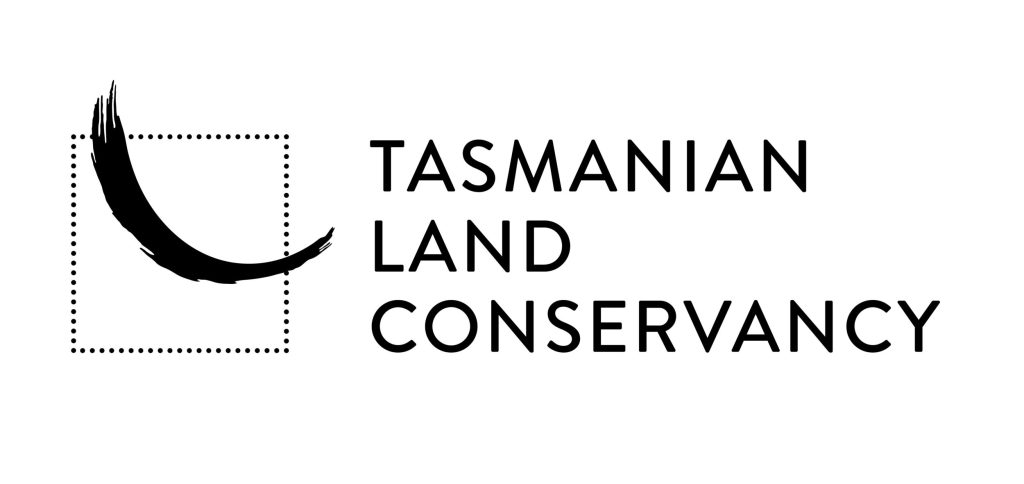Let’s check on saltmarsh recovery near Moulting Lagoon, Tasmania
NGT’s Hobart-based wetland crew, Bec and Justine, undertook a trip to Moulting Lagoon on the east coast of Tassie recently (in early April 2024), to download the data from our long-term water level and salinity loggers. This was a few days after Mark also managed to visit the site, by squeezing in a quick visit after the NGT team attended the recent field day at Sloping Main on the Tasman Peninsula.
It was great to see the restored areas of wetland and saltmarsh continuing to regenerate and adjust to their new water regime. For some areas it is exactly one year, and for others two years, after major restoration works were completed in March 2022 and 2023. The past 12 months which have been drier, following a preceding wet 2-3 year phase, has also led to some large shifts in water regime across the reserve and the vegetation is starting to respond accordingly.
Yards Hole, The Grange
Hydrological restoration works at Yards Hole were largely completed in March 2022 (except for a small section of the margin on the west side which was restored in March 2023, following negotiations regarding the threatened Wilsonia species found in that location). The northern end of Yards Hole where the small aquaculture impoundments previously existed has consolidated nicely with a mix of tidal flows, rainfall events and recent dry conditions.
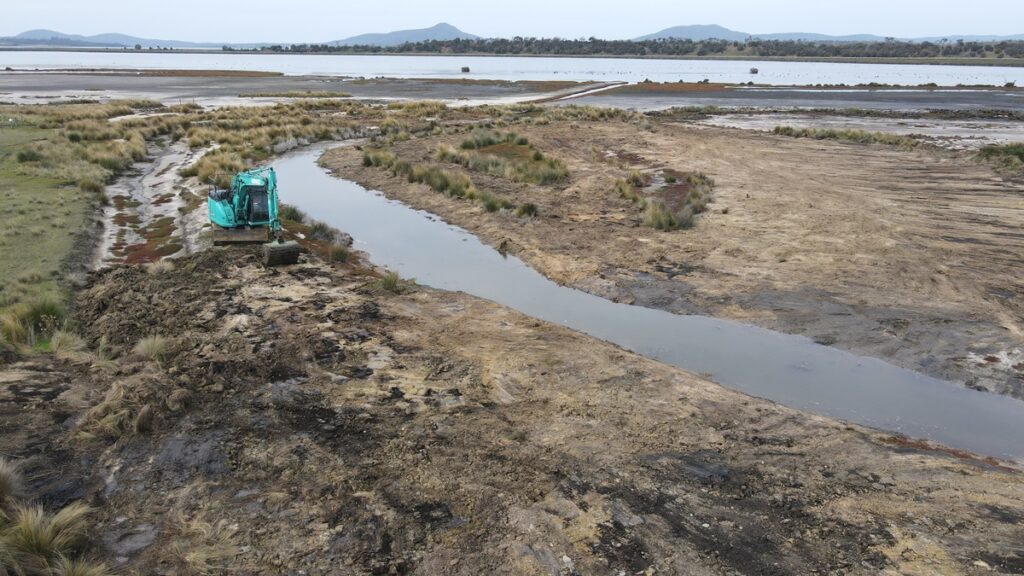
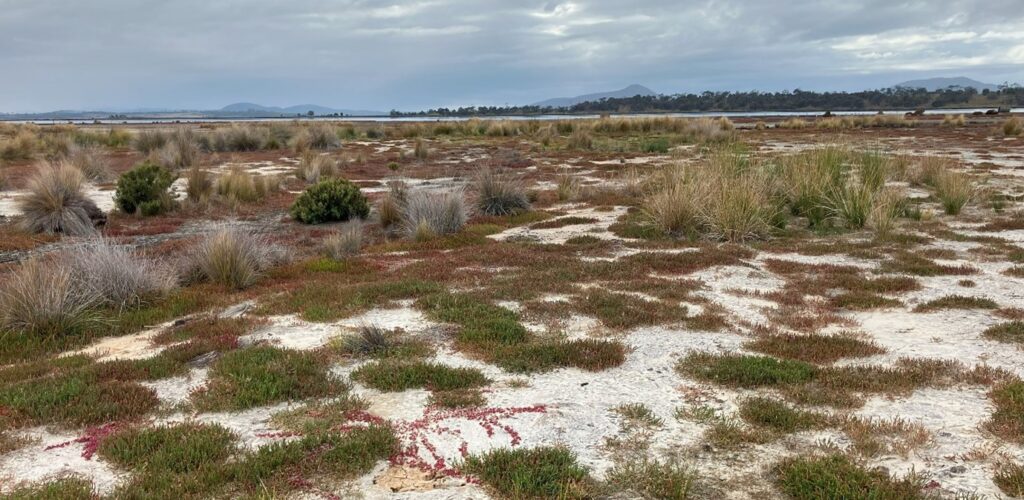
The channel that was cut from northern Yards Hole into Little Bay as part of the aquaculture works in the 1990s, is now unrecognisable (as shown below – click on images to enlarge), as are the previous impoundments. Saltmarsh species have continued to recolonise these areas at a rapid rate, where there was only bare ground just 2 years ago.
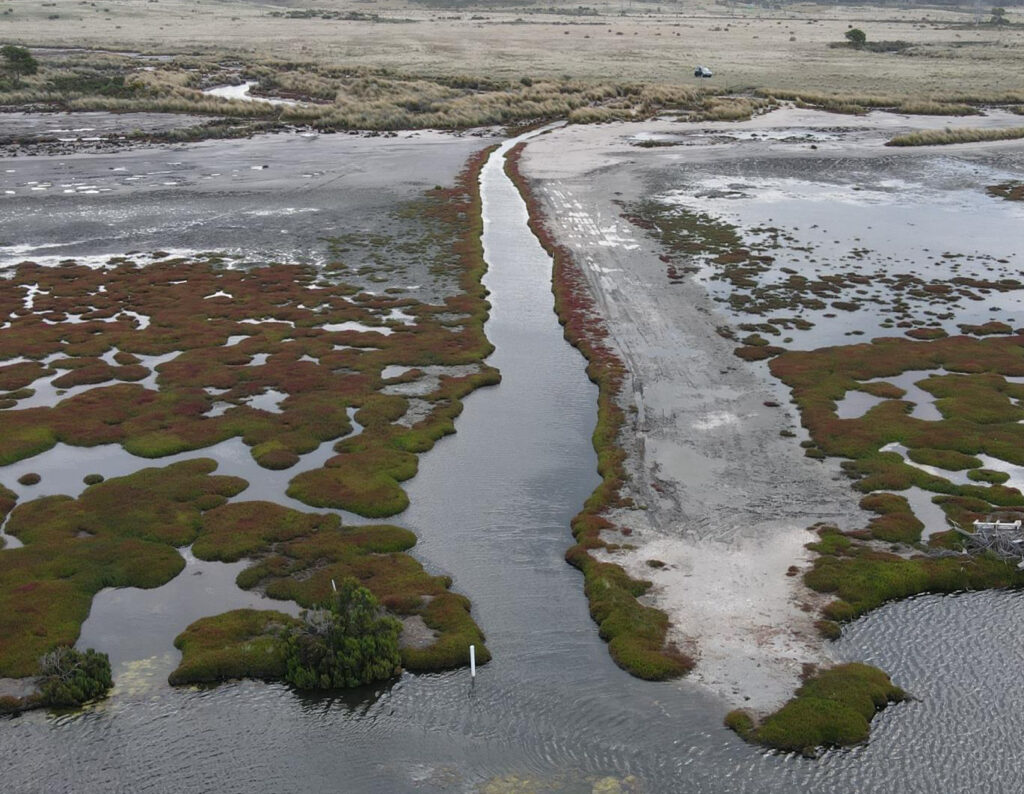
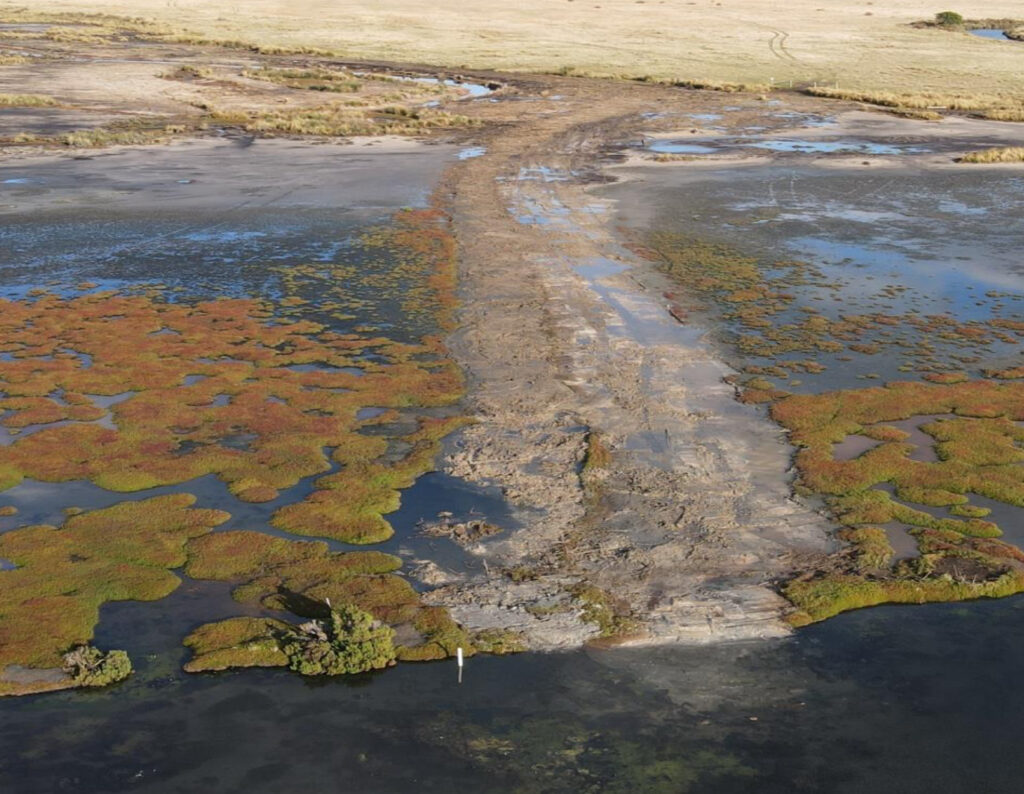
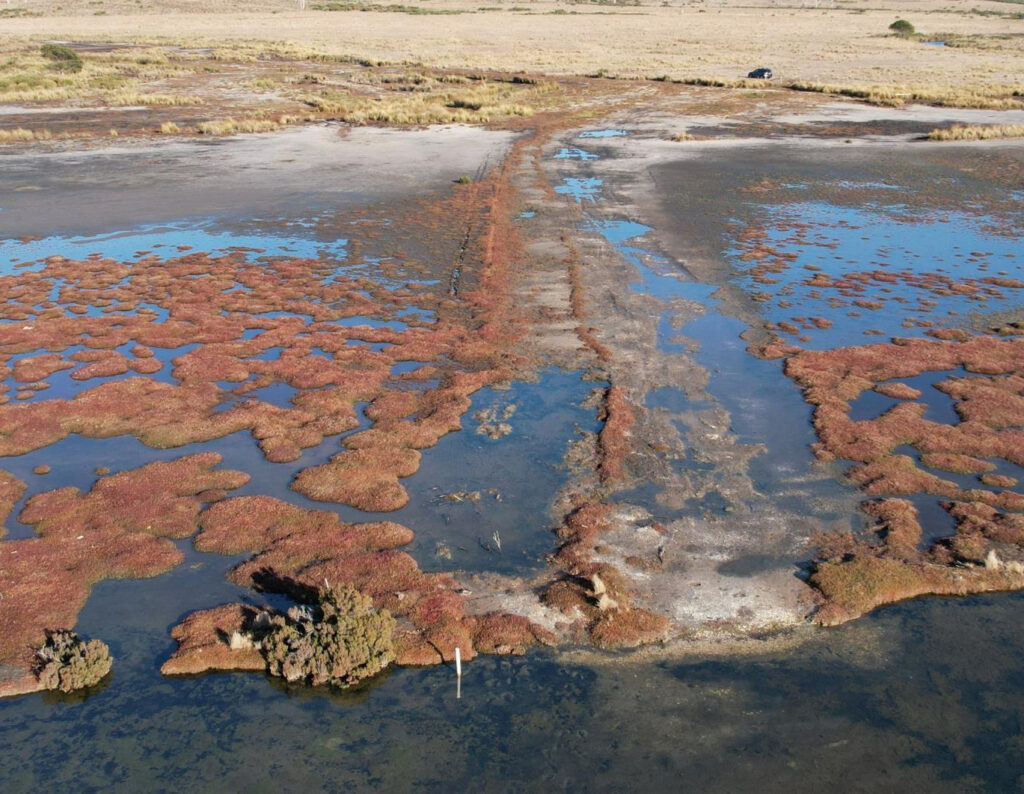
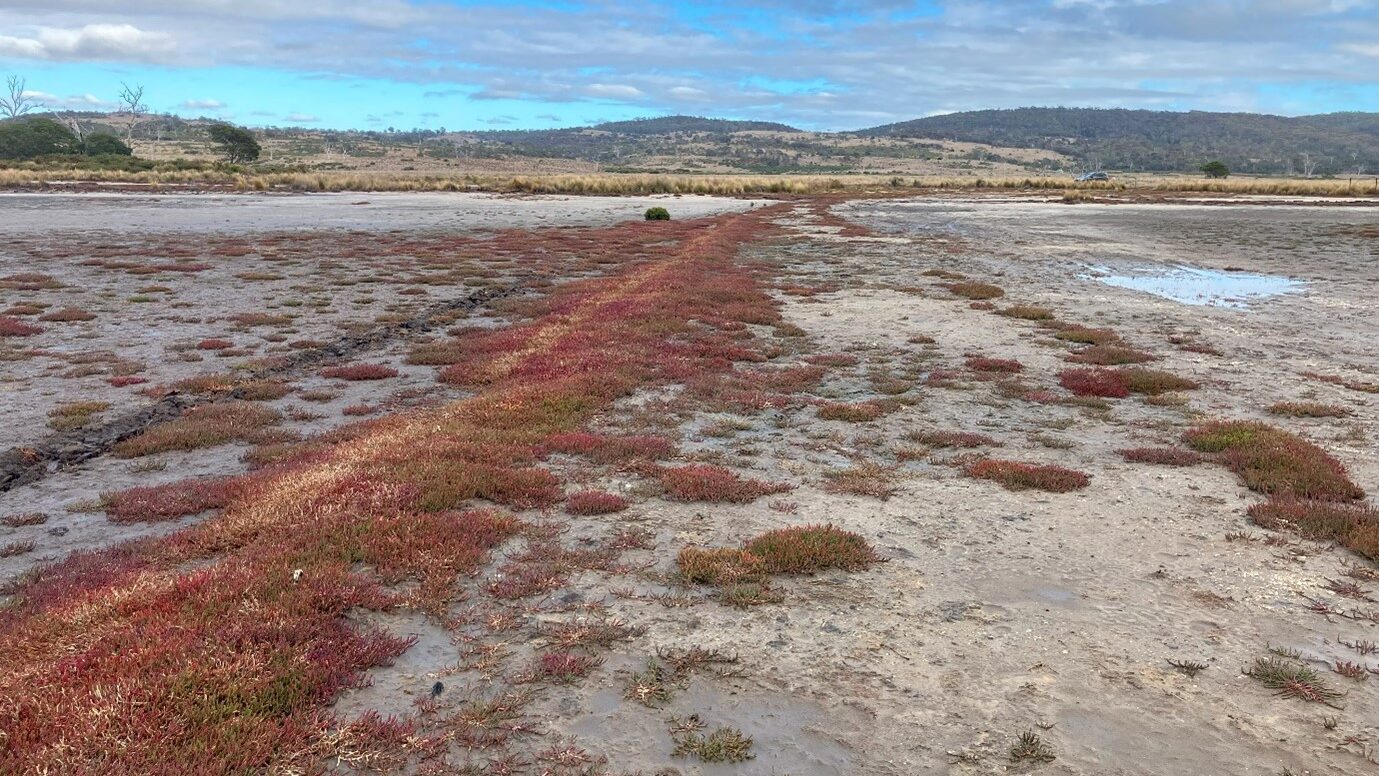
For the first time since our relationship with this site began in 2021, Yards Hole itself has completely dried this summer. This is likely due to a combination of the recent dry conditions, in conjunction with remediation of the landform resulting in backfilling of the artificial channel that previously connected Yards Hole with Little Bay. This has helped to further consolidate and settle the reformed margins of Yards Hole and provides a competitive advantage for saltmarsh species tolerant of salty, dry conditions for part of their lifecycle.
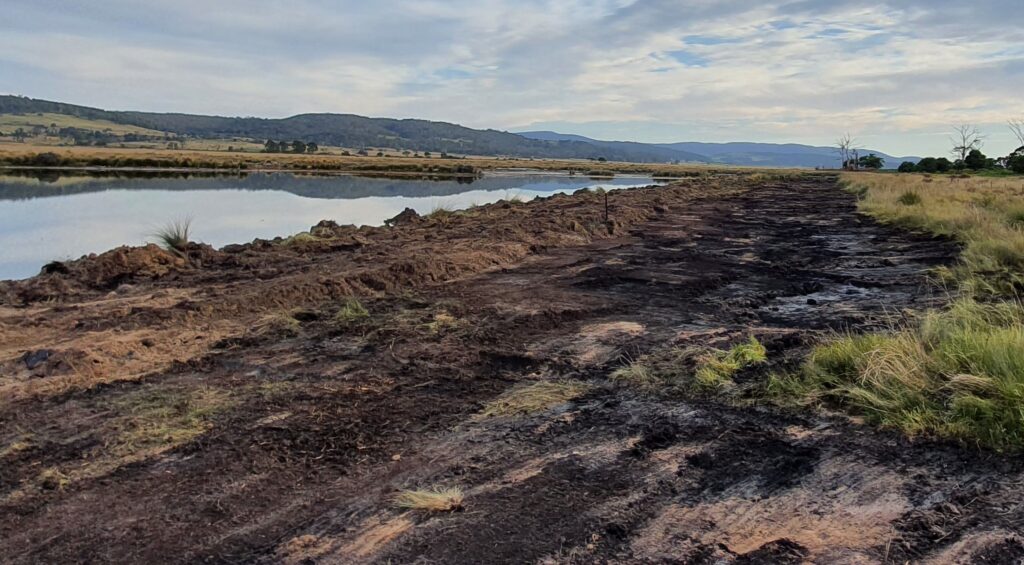
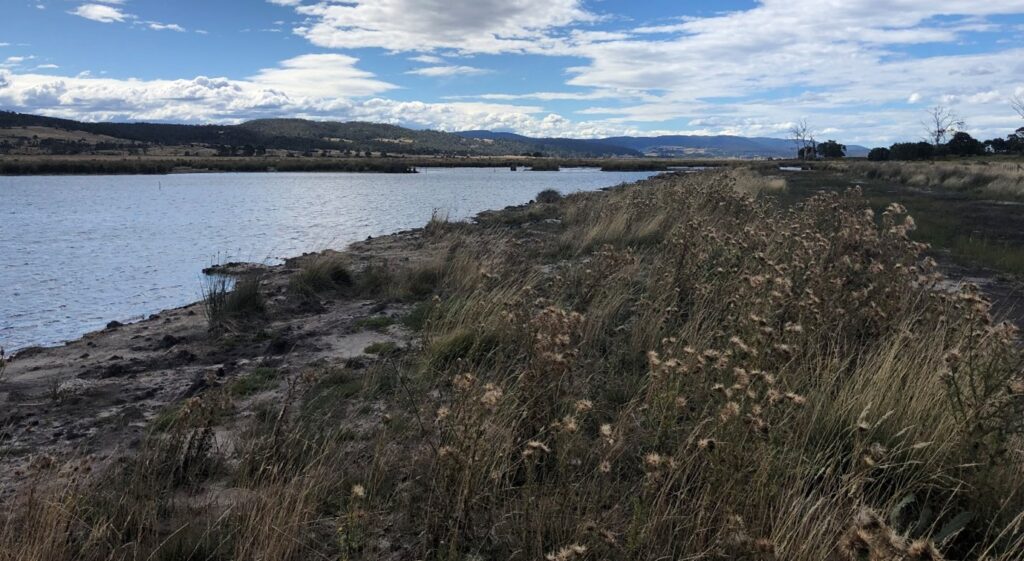
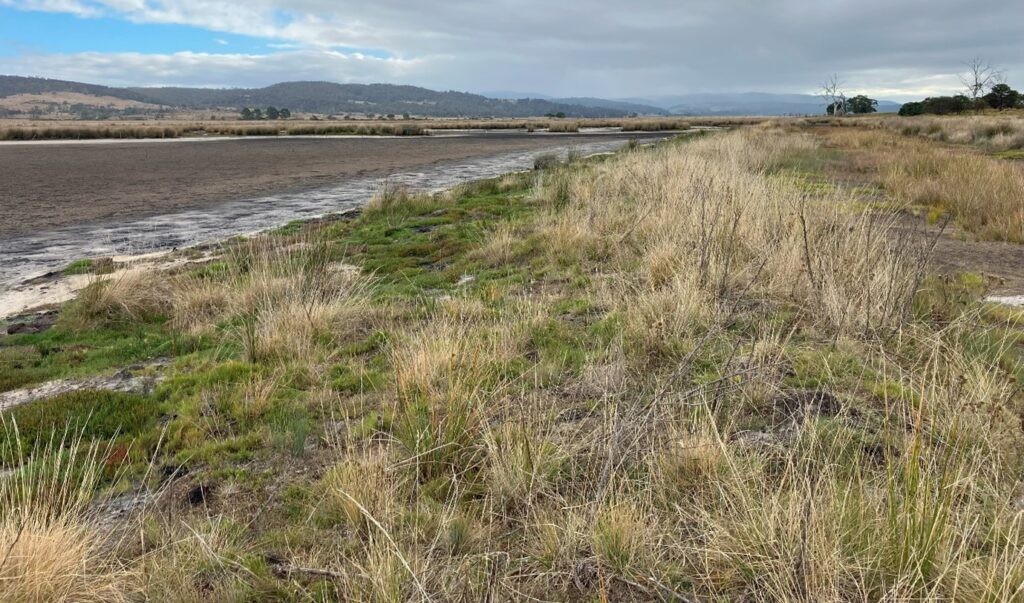
Thistles which had colonised the eastern margin after the first year (see second image above) have given way to fast colonising saltmarsh (the green groundcover in the final image above). Even though the reformed margins are somewhat ‘hummocky’ (due to project timing constraints which led to earthworks completion in very wet conditions, meaning we were not able to compact these as much as we would have liked at the time), the ground is settling nicely and the saltmarsh community doesn’t seem to mind either, as it is regenerating evenly around the newly reformed bank of Yards Hole, where a deep artificial channel used to be.
L-shaped Perimeter Levee, eastern Long Point
The small southern section of the eastern levee/drain was restored in March 2022 and the remainder of the eastern and northern L-shaped levee/drain was restored in March 2023. These areas are regenerating well, with freshly filled drain areas regenerating slightly faster than the adjacent levee cut areas – most likely due to this newly exposed soil being buried under levee banks for almost 200 years!
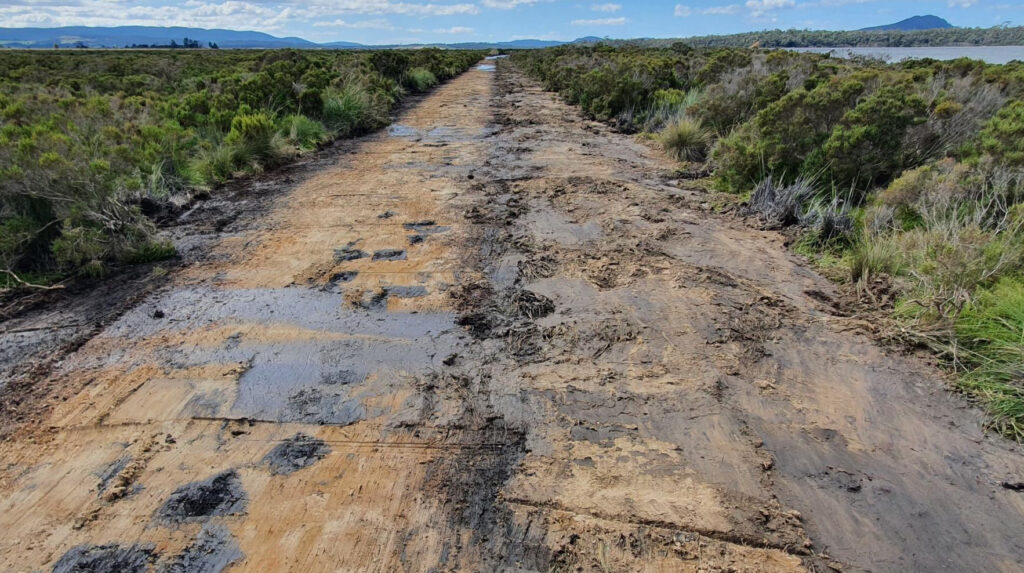
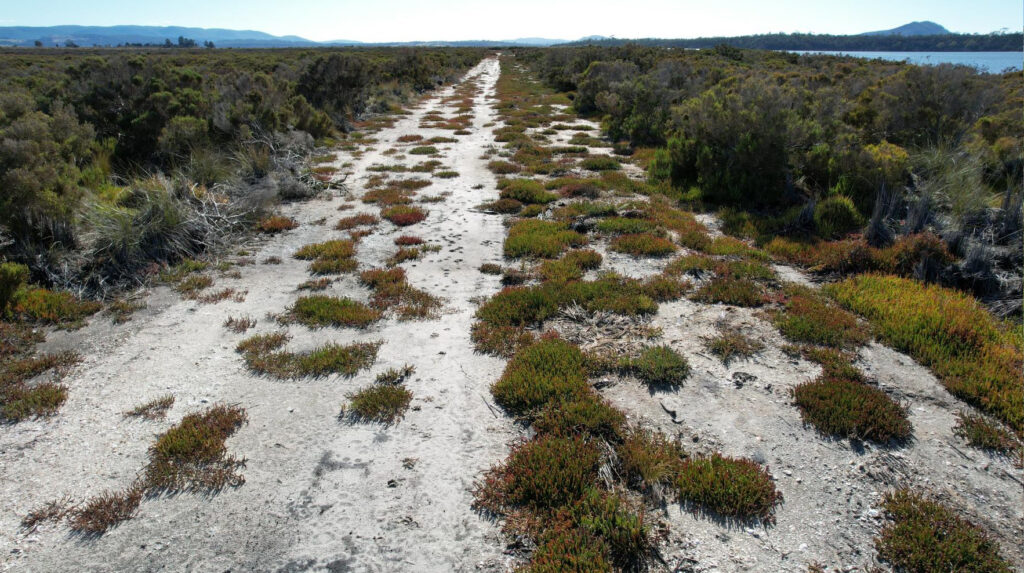
The great news is that there are quite a lot of Tecticornia (Samphire) recruits occurring on these restored areas, as well as Lawrencia and the ‘usual suspect’ saltmarsh species. Over recent years, there has actually been a large area of Tecticornia dieback in low-lying areas around Round Hole (noting that dieback commenced just prior to restoration works and occurs in both the area under the influence of restoration works, but predominantly outside), so to see new areas of regeneration of this species was fantastic.
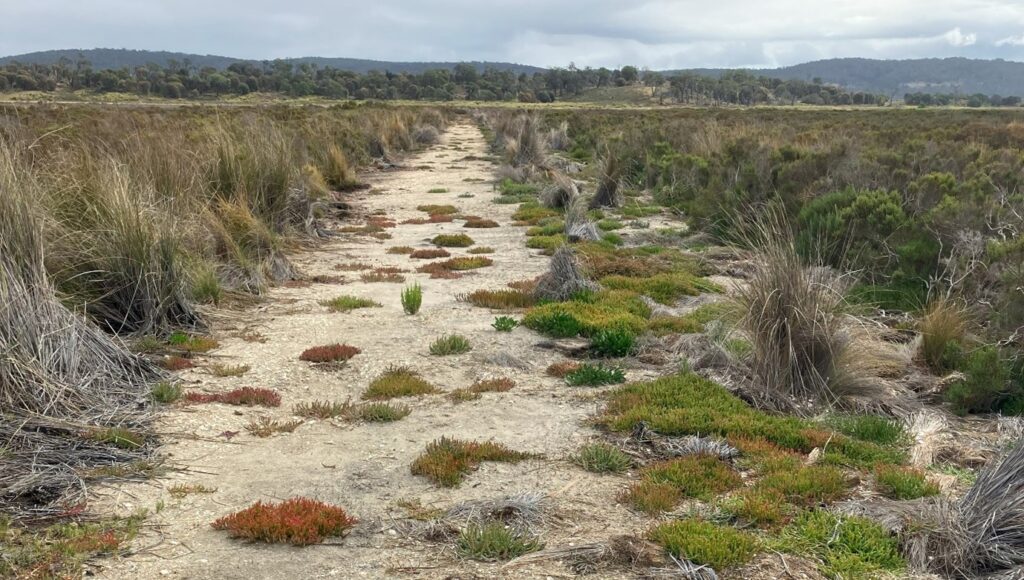
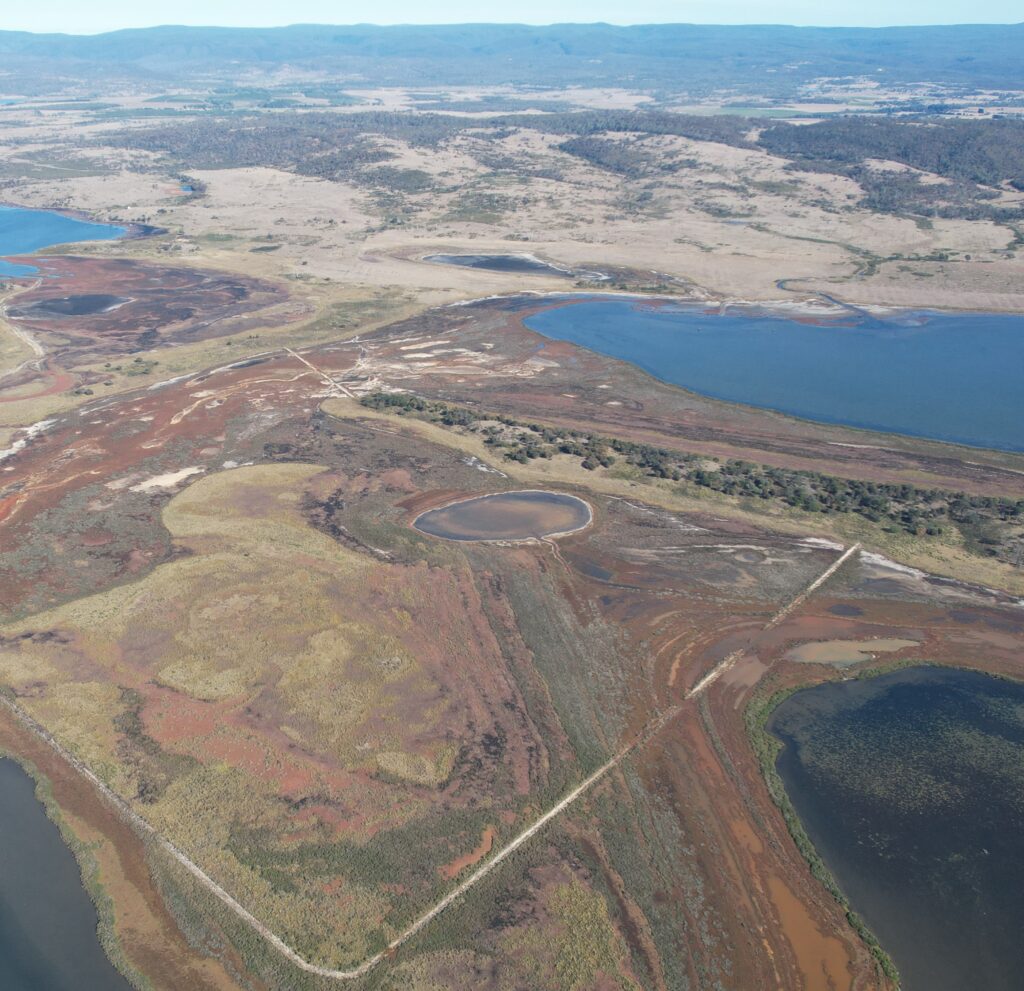
Hopefully the recent return to drier conditions on the east coat of Tasmania, will help spur on regeneration and ongoing recruitment of this species. Note that an unusually extended period of elevated water levels and freshened conditions in Moulting Lagoon over the 2-3 wet years (experienced between 2021 and 2023) appeared to be the likely cause the dieback observed at the reserve.
Opening Hole and Barkstand
The wide artificial channel running along the foot of Barkstand that connected flows between Moulting Lagoon and regulated water levels within Opening Hole, was restored in March 2023. The water regime of this wetland has changed markedly post works, with the wetland now being able to be filled by high tides and/or local rainfall and naturally recede during summer/autumn dry periods. The wetland was completely dry during our April visit. A seasonal water regime has been reinstated after this wetland experienced an artificially permanent, regulated regime as part of the failed early 1990s aquaculture development.
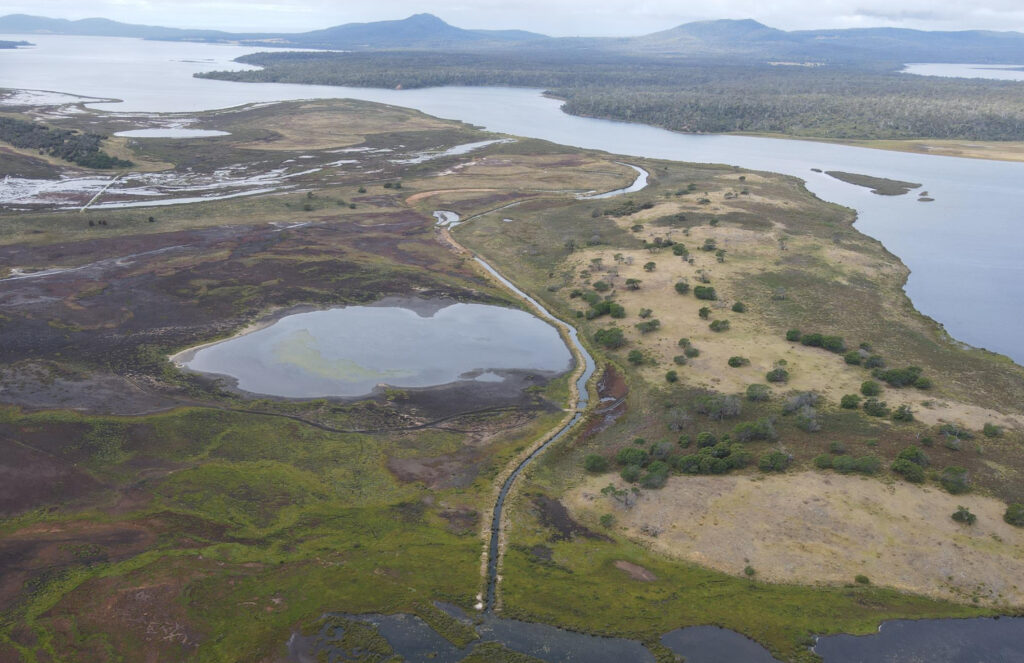
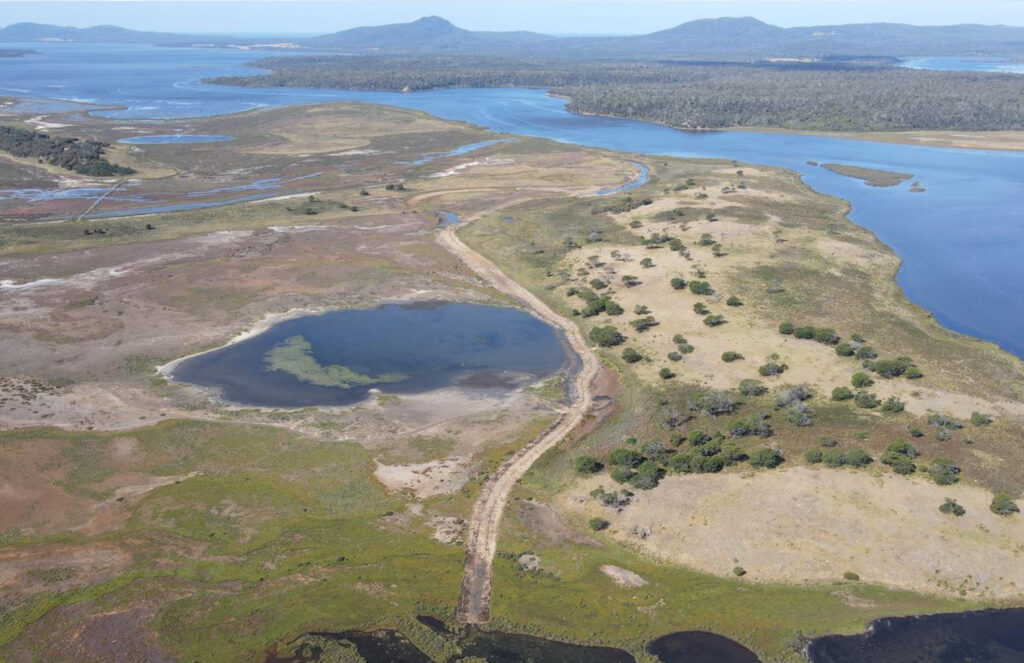
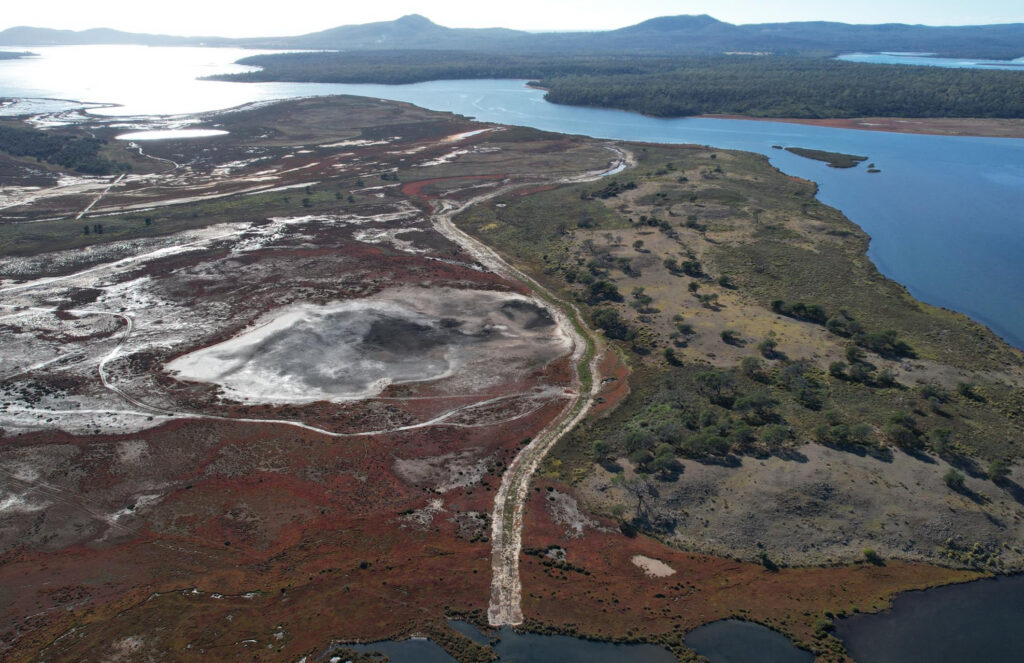
Large areas of Gahnia and saltmarsh dieback have been observed by both John Aalders (saltmarsh specialist, formerly of University of Tasmania) and the TLC over the past decade or so at this site. Under a restored water regime, there may now be some hint of Gahnia regeneration and saltmarsh recovery on the margins of this wetland. It will be important to observe these communities on the road to recovery over the coming years as the flora adapts to the new, though more natural water regime, after being subjected to an artificial water regime for the past 30 years.
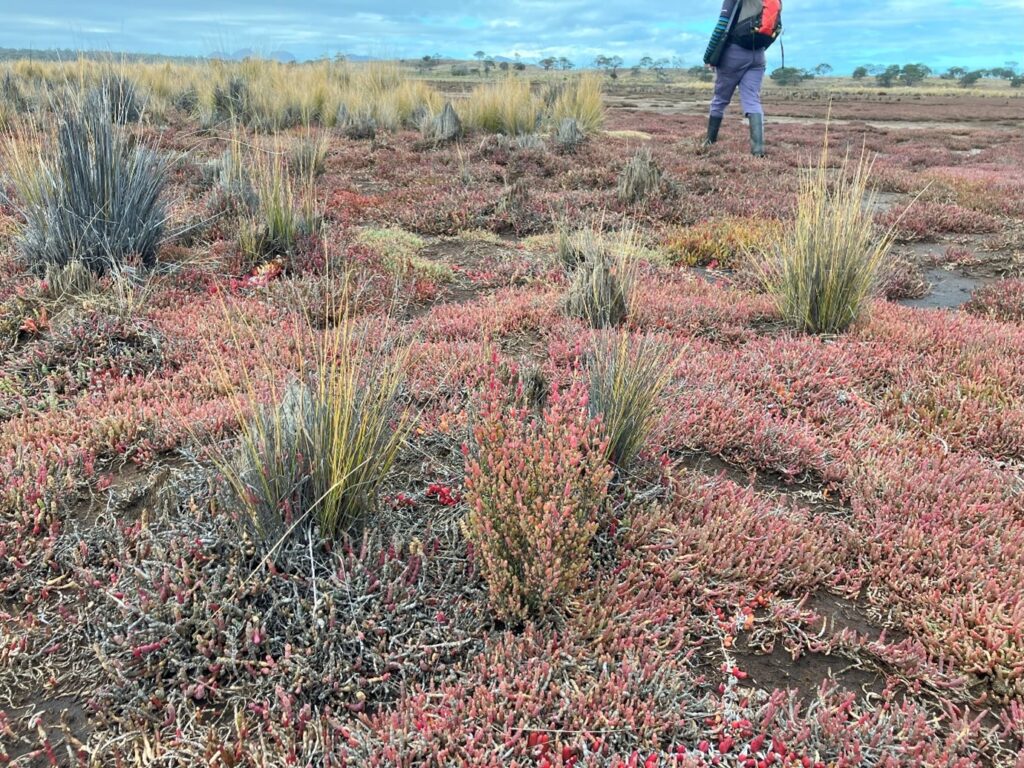
Large areas of bare ground created by the remedial bulk earthworks undertaken at Barkstand have been colonised early on by thistles (a similar theme and order of progression to that witnessed along the margins of Yards Hole two years ago). However, we are already witnessing these areas of thistles being suppressed from both sides by regenerating saltmarsh and rush communities (shown below). As with the Gahnia recovery – it will be important to observe how these areas continue to regenerate into the future, as early, often exotic, colonisers give way to locally endemic native species that have the upper hand to outcompete in the harsh conditions of saltmarsh and lagoon habitats.

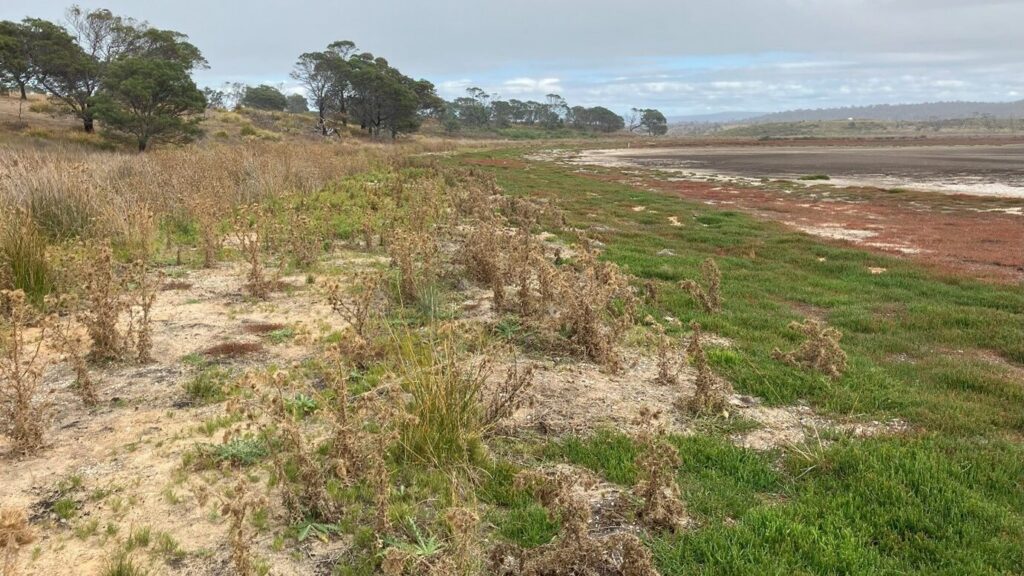
We look forward to continuing to monitor and share our observations of the outcomes of restoration works conducted at The Grange and Long Point over time, in conjunction with our project partners.
Nature Glenelg Trust delivered this important project, thanks to support from NRM South and the Tasmanian Land Conservancy, with funding provided by the Australian Government.

